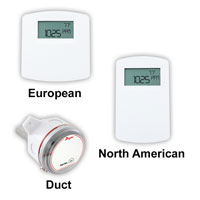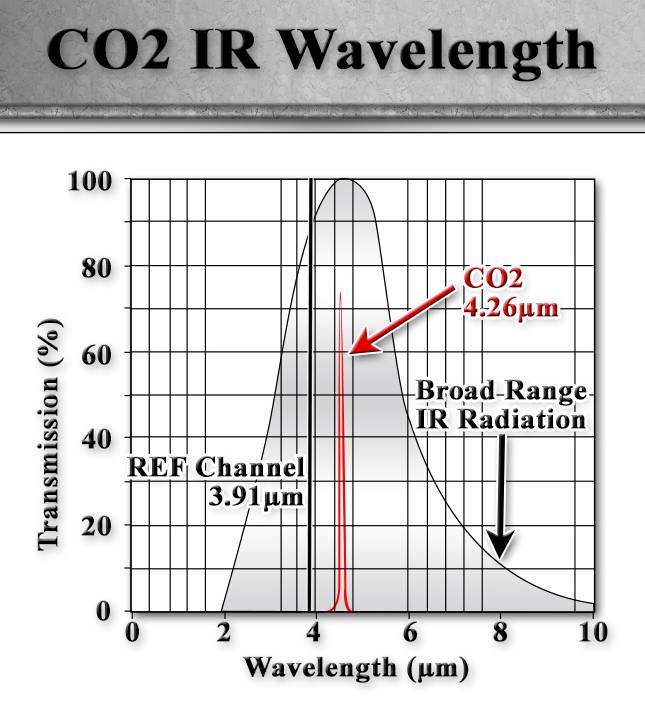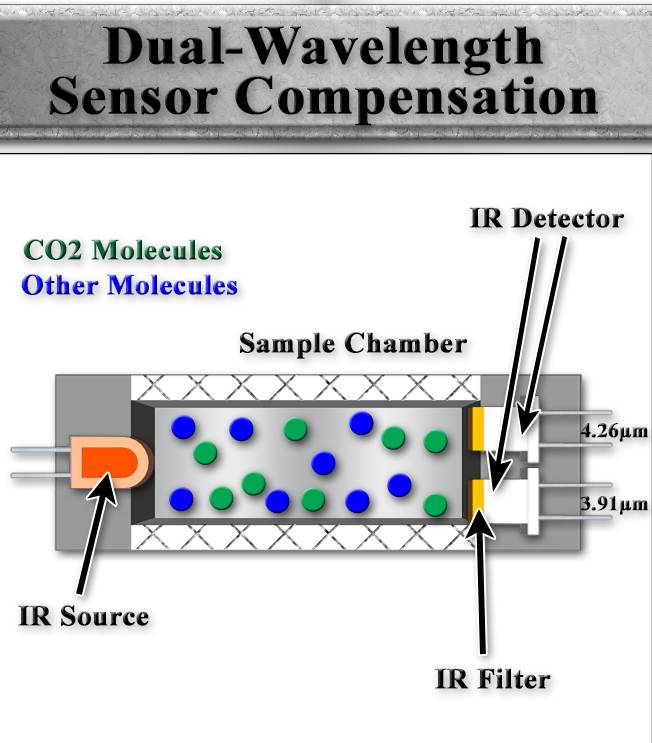CO2 Transmitters: Features and Benefits
CO2 Transmitters: Features and Benefits
In this article, we will be discussing the features of Dwyer Instruments, Inc. Series CDT and Series CDTRCarbon Dioxide Transmitters.
The Series CDT consists of Dwyer’s wall and duct mount carbon dioxide and temperature combination transmitters and the Series CDTR consists of Dwyer’s wall and duct mount carbon dioxide, relative humidity, and temperature combination transmitters.
The Dwyer Series CDT and Series CDTR Transmitters contain a single beam dual wavelength non-dispersive infrared carbon dioxide sensor also known as a NDIR carbon dioxide sensor.


On the wall mount versions, the transmitter can be ordered with an optional integral LCD, or a remote LCD can be plugged into the mini-USB port on the side. On the duct mounts, only the remote LCD can be used to display the current measurements and access the programming menus. The LCD can be programmed to display carbon dioxide only, temperature only, or the combination of carbon dioxide and temperature. The Dwyer Series CDTR can also display hu
The Series CDT and CDTR take the guess work out of ordering by including universal current and voltage outputs. For the CDT, the universal current and voltage outputs are used for carbon dioxide and temperature. For the CDTR, the universal current and voltage outputs are used for carbon dioxide and relative humidity. You can select the output via the on board jumpers to be either 4 to 20 mA, 0 to 5 V, 0 to 10 V, 1 to 5 V, 2 to 10 V, or the inverse of any of the options. On both Series, allow the temperature to be read by either a thermistor or RTD passive sensor output. An additional relay output for the carbon dioxide is available.
The buttons on the front of the wall mount housing allow access to the programming menus. In order to prevent tampering of the menu settings and calibration of the transmitter, three levels of security are included. The first level is that a local display or remote display must be present for the buttons to work. The second level involves pressing the button combination of the up and down arrows and holding them for five seconds to enter the menu. The final level of security is an internal jumper that can be set to disable the buttons. For users that would like an even higher level of security, we do offer the transmitters without buttons; but, the menus are not accessible on these models.

Menu parameters include: set points for the relay to turn on and off, high and low limits for the current and voltage outputs, engineering units’ selection, barometric pressure correction for altitudes, and calibration of the carbon dioxide sensor. Unlike most carbon dioxide sensors on the market today, the Series CDT and CDTR can be field calibrated by using calibration gases such as a gas calibration kit. To reduce the need for calibration due to higher altitudes, the Series CDT was the first transmitter on the market to include barometric pressure correction.
With all that we have done to build the Series CDT and Series CDTR Transmitters to last a long time, we know that they will eventually have to be replaced. To reduce installation time of replacement transmitters, all wiring is done on the back plate of the transmitters. When it is time to replace the transmitters, the cover simply lifts off and a new transmitter attaches in its place without any additional wiring.

The probe on our duct mount units is 9" long so that it can be used on ducts that have insulation without covering the sensing holes. When using the unit on air handlers or ducts with a substantial amount of dust, the filter covers the probe and is also replaceable. Finally, we have designed our probe to have two chambers which isolate the temperature and humidity sensors from the carbon dioxide sensor. This design reduces the amount of error in the humidity and temperature measurements found in most combination sensors.
All of the features described and the cost-effective pricing makes the Series CDT and CDTR the best value of any carbon dioxide transmitter on the market today.
